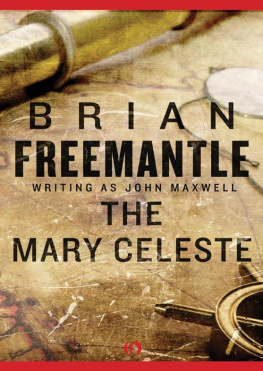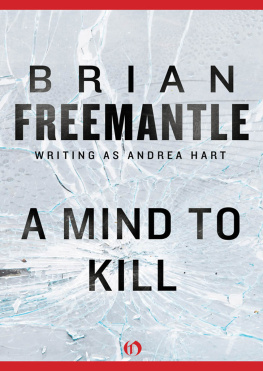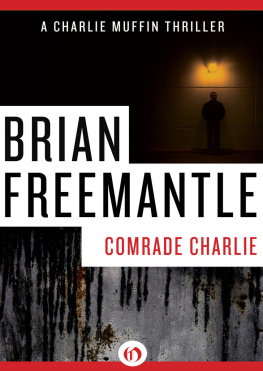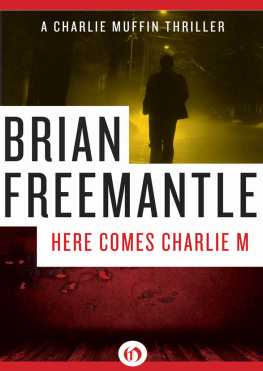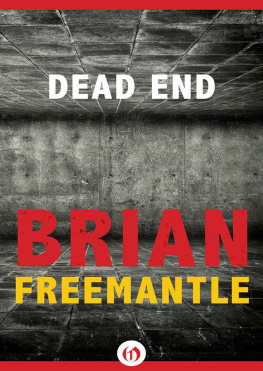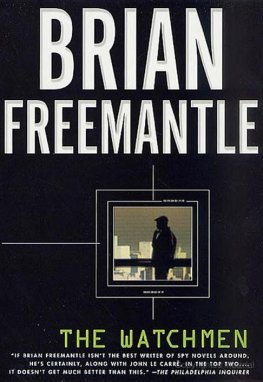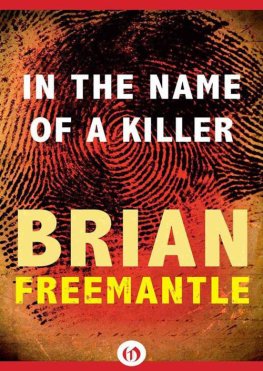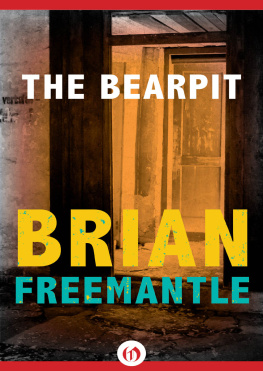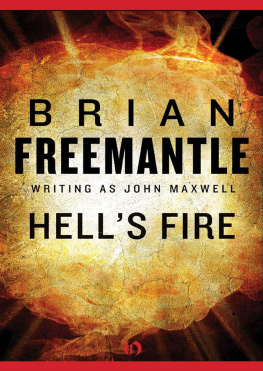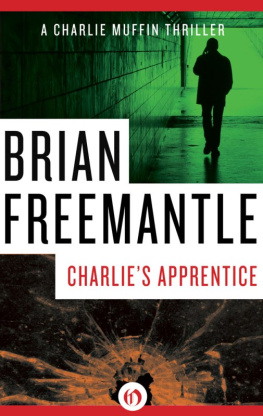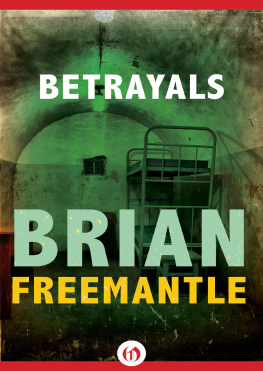Brian Freemantle - The Mary Celeste
Here you can read online Brian Freemantle - The Mary Celeste full text of the book (entire story) in english for free. Download pdf and epub, get meaning, cover and reviews about this ebook. publisher: Open Road Integrated Media, genre: Detective and thriller. Description of the work, (preface) as well as reviews are available. Best literature library LitArk.com created for fans of good reading and offers a wide selection of genres:
Romance novel
Science fiction
Adventure
Detective
Science
History
Home and family
Prose
Art
Politics
Computer
Non-fiction
Religion
Business
Children
Humor
Choose a favorite category and find really read worthwhile books. Enjoy immersion in the world of imagination, feel the emotions of the characters or learn something new for yourself, make an fascinating discovery.
- Book:The Mary Celeste
- Author:
- Publisher:Open Road Integrated Media
- Genre:
- Rating:5 / 5
- Favourites:Add to favourites
- Your mark:
- 100
- 1
- 2
- 3
- 4
- 5
The Mary Celeste: summary, description and annotation
We offer to read an annotation, description, summary or preface (depends on what the author of the book "The Mary Celeste" wrote himself). If you haven't found the necessary information about the book — write in the comments, we will try to find it.
The Mary Celeste — read online for free the complete book (whole text) full work
Below is the text of the book, divided by pages. System saving the place of the last page read, allows you to conveniently read the book "The Mary Celeste" online for free, without having to search again every time where you left off. Put a bookmark, and you can go to the page where you finished reading at any time.
Font size:
Interval:
Bookmark:
The Mary Celeste
Brian Freemantle
writing as John Maxwell

To John Killick, without
whose understanding so much
would have been impossible .
And to Rae, of course .
Wouldst thou so the helmsman answeredLearn the secrets of the sea?Only those who brave its dangersComprehend its mystery.H. W. Longfellow, The Secrets of the SeaIntroduction
The Mary Celeste , an American half-brig of 282 tons, became a maritime legend a little past three oclock on the afternoon of Wednesday, December 5, 1872.
Her precise location was latitude 38.20 N., by longitude 17.15 W., due east of the Azores and 591 miles from Gibraltar.
At that point, she passed a British brigantine, the Dei Gratia . By a coincidence later to occur to many people as just too incredible its master, Captain David Reed Morehouse, had been the dinner guest of the master of the Mary Celeste , Captain Benjamin Spooner Briggs, the night before the American vessel had sailed from New York with a cargo of 1,700 barrels of commercial alcohol, bound for Genoa.
Morehouse therefore knew the destination of the Mary Celeste . And recognised her to be on course, although sailing in the wrong direction. What he had first thought to be a fluttering distress signal was a ripped, tattered sail. The wheel, unmanned and unsecured, spun with every fresh thrust of wind.
Across the narrow gap separating them, Morehouse hailed his friends ship. There was no response.
What in Gods name can have happened? Morehouse asked first mate Oliver Deveau. The question has been posed repeatedly over the past hundred years in an attempt to solve the mystery of the worlds most famous ghost ship.
Mutiny and murder was the attempted answer of Mr Frederick Solly Flood, Attorney-General and Admiralty Proctor of Gibraltar, the port to which a salvage crew from the Dei Gratia sailed the derelict. So convinced was the Attorney-General of crime and that a chemical analyst had bungled an examination that he suppressed for fourteen years a forensic report that stains on deck and upon a sword blade were not blood.
It was a conviction that caused him, within six weeks of the Mary Celestes being found, to write in an official report to the Board of Trade in London:
My own theory is that the crew got to the alcohol and in the fury of drunkenness murdered the master, whose name was Briggs, his wife and child and the chief mate; that they then damaged the bows of the vessel with the view of giving it the appearance of having struck on rocks or suffered a collision so as to induce the master of any vessel which might have picked them up, if they saw her at some distance, to think her not worth attempting to save; and that they did some time between the 25th of November (the date of the last log entry) and 5th December, escape on board some other vessel bound for some North or South American port or the West Indies.The British government accepted his view. On March 11, 1873, Sir Edward Thornton, British Ambassador to Washington, passed on to the American administration evidence assembled in Gibraltar and asserted in his covering letter: You will perceive that the enquiries which have been initiated into the matter tend to rouse grave suspicion that the master and his wife and child were murdered by the crew.
Responding to the British governments belief, U.S. Secretary to the Treasury William A. Richardson circularised customs officials throughout the United States on March 14, instructing them to look out for any ship carrying the alleged murderers to America.
Captain James Winchester, principal owner of the Mary Celeste , fled Gibraltar after giving evidence at an enquiry because he feared the official determination to prove a crime. To the U.S. Consul in Gibraltar, Horatio Jones Sprague, Captain Winchester wrote from the safety of New York on March 10, 1873, that he had quit the colony after being convinced by a friend there that the judge and Attorney-General intended arresting him for hiring the crew to murder their officers.
Captain Winchester wrote that although the supposition was ridiculous, From what you and everybody else in Gibraltar had told me about the Attorney-General, I did not know but he might do it as they seem to do just as they like.
In such a fertile atmosphere of fear, suspicion and preconception where innuendo became evidence and facts that didnt fit were blatantly concealed the conjecture blossomed.
Four years before creating the legendary Sherlock Holmes, a Portsmouth doctor named Arthur Conan Doyle earned 30 for a short story purporting to be the account of a surviving passenger, J. Habakuk Jephson. Conan Doyle misnamed the derelict Marie Celeste and had J. Habakuk Jephson, the well known Brooklyn specialist on consumption, tell of another passenger, a half-caste from New Orleans named Septimus Goring, infiltrating the crew with henchmen, having the captain and officers killed and then sailing to Africa to establish a black empire there. Only a black stone shaped like a human ear, a talisman venerated by Negroes, saved J. Habakuk Jephson from death.
U.S. Consul Sprague sent the account printed in the magazine Cornhill to the State Department in Washington with the somewhat conservative verdict that it was replete with romance of a very unlikely or exaggerated nature.
Amazingly, Attorney-General Flood seized it as an eye-witness account and informed the American authorities he was in contact with officials in Germany, believing that some of the Mary Celestes German crew were hiding there after joining Septimus Goring in the mutiny.
Mrs Fannie Richardson, wife of the Mary Celestes first mate Albert Richardson, told newspaper reporters on March 9, 1902, that she believed that her husband, the captain and the captains wife and child had been murdered by the crew. Albert Richardsons sister, Mrs Priscilla Richardson Shelton, thought the same, while his brother, Captain Lyman Richardson, was convinced they had been killed by the crew of the Dei Gratia .
British author J. L. Hornibrook wrote in Chambers Journal in 1904 that the crew were plucked from the ship, one by one, by a huge octopus or devil fish, recalling evidence at the enquiry of an axe-slash upon a deck-rail and suggested it had been caused in a futile attempt to fight the monster off.
The Nautical Magazine published an account by another alleged survivor of the vessel, in which Barbary pirates had boarded and slaughtered everyone aboard, and in the British Journal of Astrology in 1926 author Adam Bushey had the crew being dematerialised because they had sailed at a psychically vital moment over the very spot where the lost city of Atlantis had sunk beneath the waves. Professor M. K. Jessup, instructor in Astronomy at Michigan University, wrote in a book, UFO , in 1955 that the people aboard the Mary Celeste didnt go downwards but upwards snatched off the vessel by the crew of a hovering flying saucer.
As the theories became wilder, so did the facts surrounding the finding of the Mary Celeste by the Dei Gratia .
Within half a century, it was unquestioningly believed that, when Captain Morehouse had come upon the vessel, there had been a half-eaten breakfast upon a cabin table, together with three cups of warm tea, a bottle of cough mixture open but unspilled upon another table, a phial of oil and a thimble beside a sewing machine upon which a childs dress was being repaired, the captains watch still ticking, the stove in the galley warm to the touch, the galley fire burning, a cat peacefully asleep on a locker, sailors pipes half-smoked, their washing hanging out to dry, the ships boats still at their davits and no sign of damage or violence.
Next pageFont size:
Interval:
Bookmark:
Similar books «The Mary Celeste»
Look at similar books to The Mary Celeste. We have selected literature similar in name and meaning in the hope of providing readers with more options to find new, interesting, not yet read works.
Discussion, reviews of the book The Mary Celeste and just readers' own opinions. Leave your comments, write what you think about the work, its meaning or the main characters. Specify what exactly you liked and what you didn't like, and why you think so.

